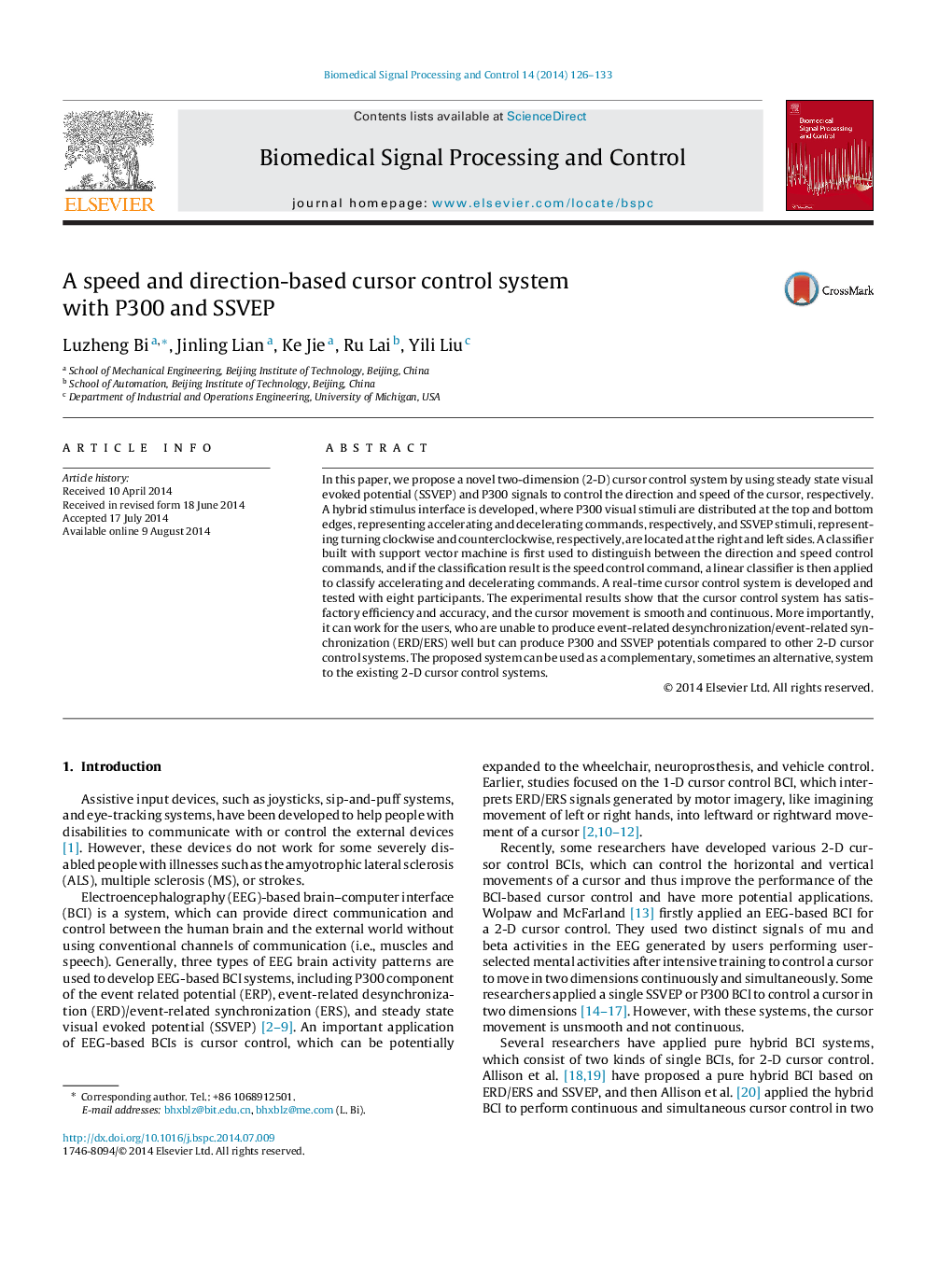| Article ID | Journal | Published Year | Pages | File Type |
|---|---|---|---|---|
| 558010 | Biomedical Signal Processing and Control | 2014 | 8 Pages |
In this paper, we propose a novel two-dimension (2-D) cursor control system by using steady state visual evoked potential (SSVEP) and P300 signals to control the direction and speed of the cursor, respectively. A hybrid stimulus interface is developed, where P300 visual stimuli are distributed at the top and bottom edges, representing accelerating and decelerating commands, respectively, and SSVEP stimuli, representing turning clockwise and counterclockwise, respectively, are located at the right and left sides. A classifier built with support vector machine is first used to distinguish between the direction and speed control commands, and if the classification result is the speed control command, a linear classifier is then applied to classify accelerating and decelerating commands. A real-time cursor control system is developed and tested with eight participants. The experimental results show that the cursor control system has satisfactory efficiency and accuracy, and the cursor movement is smooth and continuous. More importantly, it can work for the users, who are unable to produce event-related desynchronization/event-related synchronization (ERD/ERS) well but can produce P300 and SSVEP potentials compared to other 2-D cursor control systems. The proposed system can be used as a complementary, sometimes an alternative, system to the existing 2-D cursor control systems.
